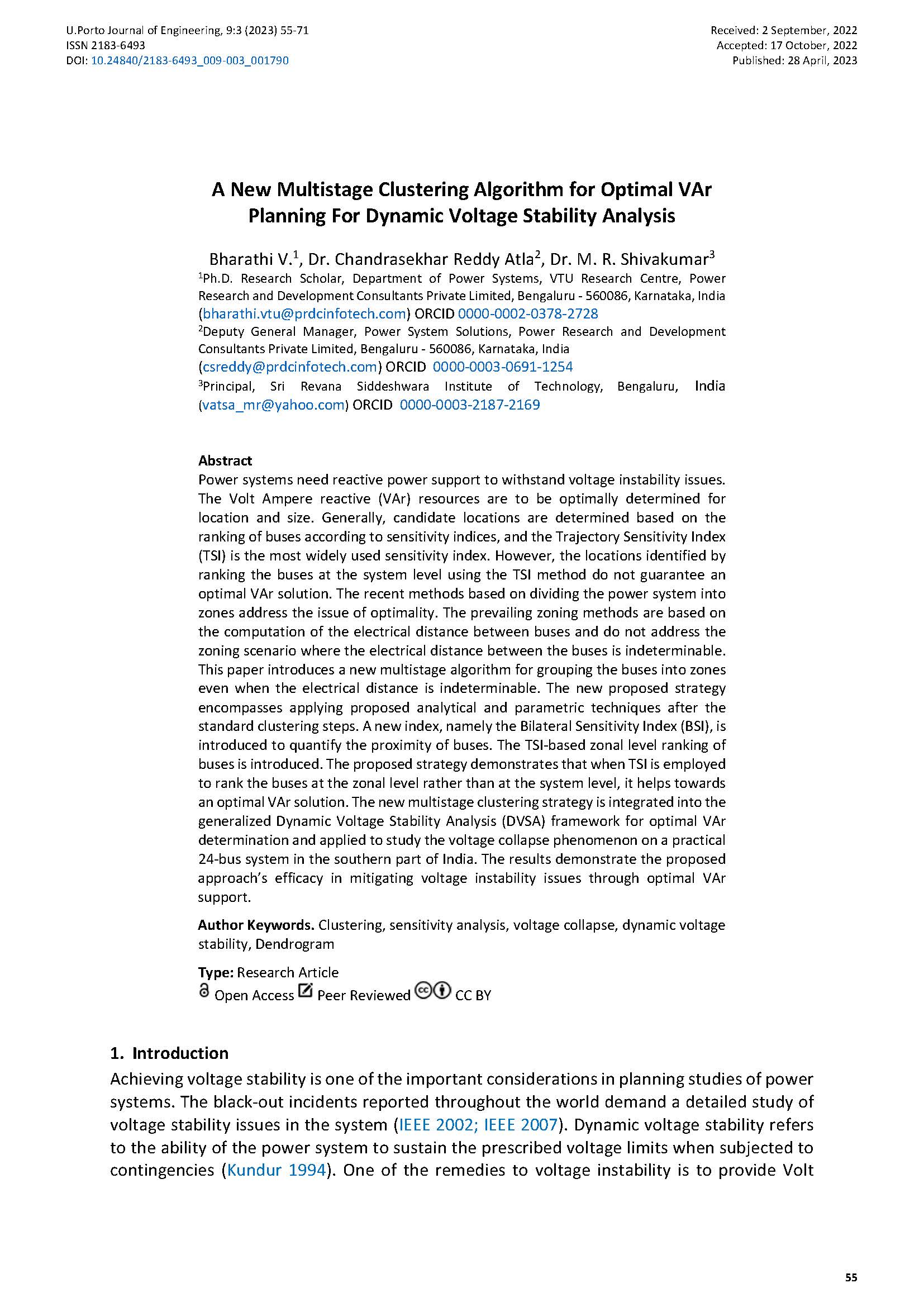A New Multistage Clustering Algorithm for Optimal VAr Planning For Dynamic Voltage Stability Analysis
Main Article Content
Abstract
Power systems need reactive power support to withstand voltage instability issues. The Volt Ampere reactive (VAr) resources are to be optimally determined for location and size. Generally, candidate locations are determined based on the ranking of buses according to sensitivity indices, and the Trajectory Sensitivity Index (TSI) is the most widely used sensitivity index. However, the locations identified by ranking the buses at the system level using the TSI method do not guarantee an optimal VAr solution. The recent methods based on dividing the power system into zones address the issue of optimality. The prevailing zoning methods are based on the computation of the electrical distance between buses and do not address the zoning scenario where the electrical distance between the buses is indeterminable. This paper introduces a new multistage algorithm for grouping the buses into zones even when the electrical distance is indeterminable. The new proposed strategy encompasses applying proposed analytical and parametric techniques after the standard clustering steps. A new index, namely the Bilateral Sensitivity Index (BSI), is introduced to quantify the proximity of buses. The TSI-based zonal level ranking of buses is introduced. The proposed strategy demonstrates that when TSI is employed to rank the buses at the zonal level rather than at the system level, it helps towards an optimal VAr solution. The new multistage clustering strategy is integrated into the generalized Dynamic Voltage Stability Analysis (DVSA) framework for optimal VAr determination and applied to study the voltage collapse phenomenon on a practical 24-bus system in the southern part of India. The results demonstrate the proposed approach’s efficacy in mitigating voltage instability issues through optimal VAr support.
Downloads
Article Details

This work is licensed under a Creative Commons Attribution 4.0 International License.
Authors who publish with this journal agree to the following terms:
- Authors retain copyright and grant the journal right of first publication with the work simultaneously licensed under a Creative Commons Attribution License that allows others to share the work with an acknowledgement of the work's authorship and initial publication in this journal.
- Authors grant the journal the rights to provide the article in all forms and media so the article can be used on the latest technology even after publication and ensure its long-term preservation.
- Authors are able to enter into separate, additional contractual arrangements for the non-exclusive distribution of the journal's published version of the work (e.g., post it to an institutional repository or publish it in a book), with an acknowledgement of its initial publication in this journal.
- Authors are permitted and encouraged to post their work online (e.g., in institutional repositories or on their website) prior to and during the submission process, as it can lead to productive exchanges, as well as earlier and greater citation of published work (See The Effect of Open Access).

